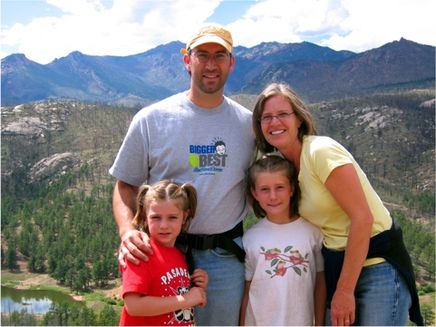“Superbug” Book - Agricultural Use of Antibiotics Helped Create Drug Resistant MRSA
image: Manure Lagoon at a swine CAFO
In conversations about agriculture and health, I think the issues raised in the book, Superbug: The Fatal Menace of MRSA by Maryn Mckenna, need to be front and center, especially as it relates to CAFOs (Concentrated Animal Feeding Operations) and the use of antibiotics as a growth enhancer in animals. The book explains:
Food animals get many drugs for many reasons. They get them for disease treatment. They get them for disease prevention....Food animals also get antibiotics for "growth promotion," a metabolic mysterious process that has made possible the entire high-volume, low-margin business of industrial-scale farming....The Union of Concerned Scientists estimates that, of those 29.5 million pounds of antimicrobials given to animals every year, only 2 million of them are actually intended to treat disease. The rest, almost 80% of all antibiotics used in the United States every year, are "non-therapeutic."
The process makes human-medicine experts furious. From their point of view, farmers are routinely practicing antibiotic misuse: giving drugs in the absence of disease, and giving them in such small doses that they kill off only vulnerable bacteria and leave the Darwinian battleground clear for the tough ones. Making it worse, many of the animal drugs are identical, or closely chemically related, to drugs used in humans to combat disease.
Mckenna explains that there has been a great debate through the years as to whether or not these agricultural practices are directly leading to drug-resistant bacteria that endanger humans. The ag. advocates have argued for decades that the direct link had not been demonstrated. Mckenna points out that, technically, this was correct for many years. Scientists had a hard time putting every piece of the puzzle together to prove the link because the chain of events spanned decades and a very complex processes of transmission. In 1976, Dr. Stuart Levy of Tufts U. was able to finally prove the link between drugged chickens and transmission of disease to humans handling the chickens. According to Mckenna, this led the EU to ban the use of a particular drug as an animal growth promoter.
The author makes a strong case that CAFOs have contributed to the spread of MRSA, one of the most problematic, multi-drug-resistant bacteria.
By the time MRSA ST398 arose in Dutch pigs in 2004, though, it seemed that the focus of the argument had shifted. The contention was no longer that the practice was safe for the humans who took care of the animals, or for those who ate their milk, meat, or eggs: instead, it was that it was economically impossible for agriculture to stop. In CAFOs, antibiotics were the only way to keep livestock healthy long enough to efficiently put on weight.
Mckenna outlines the problem with CAFOs and the way they contribute to the spread of MRSA:
From a microbiological standpoint, the problem with CAFOs is not just the drugs given to the animals, or the vast number of animals, which increase the chances of a resistant germ evolving, or the miserable crowding that creates a perfect setting for passing resistant bacteria from one animals to another. It is also what those animals leave behind: more than 300 million tons of manure in a year, twice as much as comes from all the humans in the United States....On a small-scale farm, the manure would be sprayed on cropland, but there isn't a lot of cropland near CAFOs. Instead, there are other CAFOs, clustered in tightly defined areas....With nowhere to spray it, the manure is stored on farms in enormous lagoons. Some gut bacteria survive in manure, and so there are bacteria in lagoons. Some of them may be resistant bacteria, carrying resistance genes that are available for other bacteria to acquire. If any antibiotics are being used on the farm, there will be antibiotic resistance in the manure as well, putting additional evolutionary pressure to develop resistance on whatever bacteria are present.
Two words that should have never been joined together in a sentence - manure and lagoon.
This is another example of the deferred costs to the environment and human health built into the current food system. The more I learn about the industrial animal food chain, the more it seems like a complex house of cards, full of potential weaknesses that could collapse the whole system. If you're looking for a way to respond as a consumer, I recommend eating less meat and sourcing the meat, eggs, & milk you do eat from local, small-scale farms. Getting your own chickens is also a great idea.(Book plug: Year of Plenty has a whole section on how to get started raising chickens.) A good rule of thumb - if the farm that produced this meat, milk, eggs has a manure lagoon than it's a good idea to find another source.
Go here to see a map showing the concentration of factory farms in the US.
